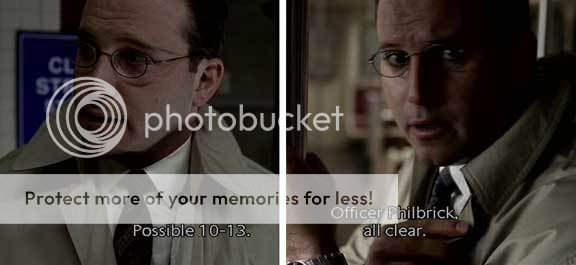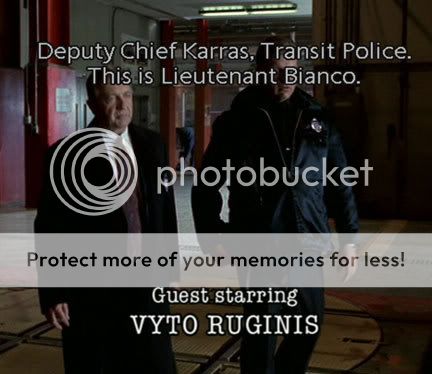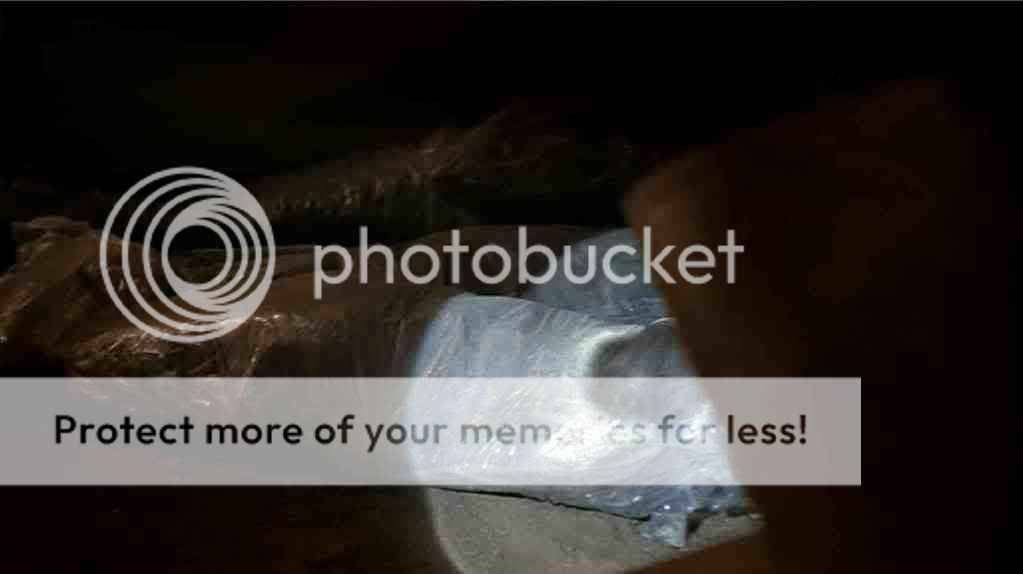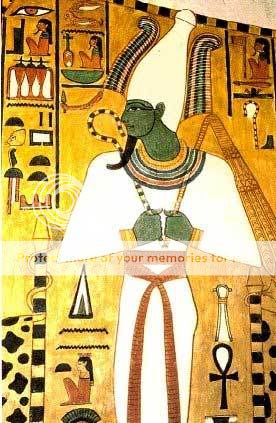The story never made a lick of sense to me, and seemed like a bizarre precursor to the momentous Mytharc that followed. But Knowles' Law has it if you don't understand something in a ritual drama, look first for a hidden symbolic meaning.
The links between Freemasonry and the ancient Egyptian traditions are obvious and well-documented, though interest in the Egyptian mysteries is by no means limited to Masons. But if we were about to watch a lengthy, updated version of the grand Egyptian mythological cycle, might it not make sense to look for Masonic footprints as well?
After all, we had overt Masonic themes in Millennium (though hardly sympathetic), so what about the Mighty X? Are there any signs that Ten Thirteen Productions wanted to make a statement about Freemasonry itself in their flagship show?
Sects, cults and cabals are uniformly seen as negative influences in Ten Thirteen programs - what do the symbols say about the Craft in "Medusa?"


The very first shot of Medusa- Officer Philbrick standing at the (fictional) Clay Street Station in Boston. We were looking to evidence of Masonic symbolism, correct? And a subway station is a nice visual analog for a Mithraeum, Masonry's Roman ancestor.


Here Officer Philbrick ("lover of bricks") talks to an off-camera police dispatcher about a possible "10-13."
Officer Philbrick then dies a horrible death after speaking of this "10-13" to someone outside Clay Street Station. His post-mortem condition is not at all unlike the prescribed fate of an Entered Apprentice breaking his oath not to divulge the secrets of the lodge to outsiders:
"I do most solemnly and sincerely promise and swear... To have my throat cut across... My tongue torn out by the roots... And my body buried in the rough sands of the sea at low water mark, where the tide ebbs and flows in twenty-four hours... ...should I ever knowingly or willingly violate this my solemn oath or obligation as an Entered Apprentice Mason. So help me God."- Masonic OathStrangely enough, there's an interesting parallel to the "rough sands of the sea at low water mark" in the dialog of the show, referring to the location of Officer Philbrick's demise.
MELNICK: This line was tunneled through landfill adjacent to the harbor. It's a part of the Big Dig.
 Next we meet Deputy Chief Karras, who's in a hurry to find out what killed Officer Philbrick and get the trains running again, "so every commuter in Boston can get home to watch Survivor II." Who might Karras represent, sending TV viewers into the heart of this profound mystery?
Next we meet Deputy Chief Karras, who's in a hurry to find out what killed Officer Philbrick and get the trains running again, "so every commuter in Boston can get home to watch Survivor II." Who might Karras represent, sending TV viewers into the heart of this profound mystery?KARRAS 1. Greek: occupational name for a carter,
from karro ‘cart’ + the occupational suffix -as.
 After muttering about cover stories and the media, John "Anubis" Doggett is sent into the subway tunnels, equipped with an "all-seeing eye" camera, while Scully sits up in the control room (read: Heaven) and watches on TV as Doggett and his three assistants journey into the heart of the mystery.
After muttering about cover stories and the media, John "Anubis" Doggett is sent into the subway tunnels, equipped with an "all-seeing eye" camera, while Scully sits up in the control room (read: Heaven) and watches on TV as Doggett and his three assistants journey into the heart of the mystery."According to Masonic tradition Hiram was murdered by three of his assistants [Jubela, Jubelo, and Jubelum] soon after he had completed the bronzework of the Temple [of Solomon]. And this event was for some reason regarded as so laden with meaning that is was commemorated in the initiation ceremonies for Master masons - in which each initiate was required to play the role of the murder victim."
- Graham Hancock, The Sign and the SealThe tunnel motif itself is interesting:
If the passage leading to the King's Chamber and the Queen's Chamber was sealed up thousands of years before the Christian Era, those later admitted into the Pyramid Mysteries must have received their initiations in subterranean galleries now unknown. Without such galleries there could have been no possible means of ingress or egress, since the single surface entrance was completely dosed with casing stones.
- Manly P. Hall, Secret Teachings of All Ages
 Bringing us back to the three unworthy craftsmen are three wrapped bodies of vagrants, calling to mind the mummified bodies of Sequenere Tao's assassins as described in Knight and Lomas' Hiram Key.
Bringing us back to the three unworthy craftsmen are three wrapped bodies of vagrants, calling to mind the mummified bodies of Sequenere Tao's assassins as described in Knight and Lomas' Hiram Key. Here Scully works with the beautiful marine biologist Kai Bowe to help Doggett solve the mystery in the tunnels. Kai plays a similar role that Monica Reyes would in the eighth season.
Here Scully works with the beautiful marine biologist Kai Bowe to help Doggett solve the mystery in the tunnels. Kai plays a similar role that Monica Reyes would in the eighth season.And all the beauty and all the abundance that had come from Rê would be destroyed if the pieces that had been the body of Osiris were not brought together once more. So Isis sought for them, and Nephthys, her sister, helped her in her seeking.
- Orpheus: Myths of the World

Two of Doggett's assistants leave the subway and the third knocks Doggett unconscious with a blow to the head. The tableau is uncannily reminscent of the Master Mason ritual.
At the east gate, the third ruffian "struck him a violent blow full in the center of the forehead with a heavy stone maul, which laid him lifeless at his feet. Such was he manner of his death.""In the light of the candle I saw the Worshipful Master reach forward over his pedestal with an instrument which touched my forehead and I felt many hands pulling me backwards to the floor. I was held straight and my feet were kept in place, so that I hinged backwards as I swung into the darkness. As I touched he ground a funeral shroud was immediately draped around me, so only my upper face was uncovered."
- Christopher Knight and Robert Lomas, The Hiram Key: Pharaohs, Freemasons and the Discovery of the Secret Scrolls of Jesus
 After emerging from unconsciousness, Doggett's skin is glowing with the green Medusa flourescence. I guess you could say he becomes a green man...
After emerging from unconsciousness, Doggett's skin is glowing with the green Medusa flourescence. I guess you could say he becomes a green man..."The efforts made to discover the origin of the Hiramic legend show that, while the legend in its present form is comparatively modern, its underlying principles run back to remotest antiquity.

It is generally admitted by modern Masonic scholars that the story of the martyred Hiram is based upon the Egyptian rites of Osiris, whose death and resurrection figuratively portrayed the spiritual death of man and his regeneration through initiation into the Mysteries. Hiram is also identified with Hermes through the inscription on the Emerald Tablet."
- Manly P. Hall, Masonic, Hermetic, Quabbalistic & Rosicrucian Symbolical Philosophy
To Be Continued.
